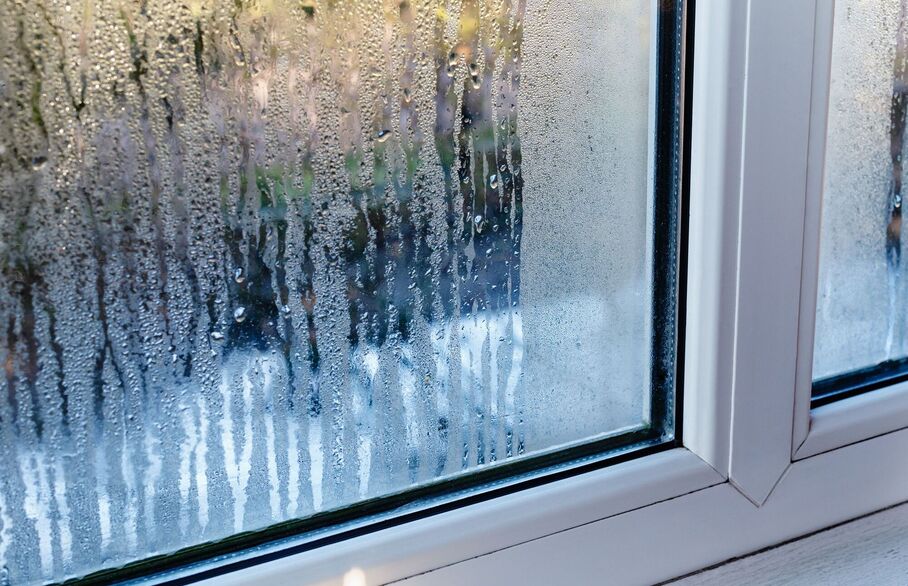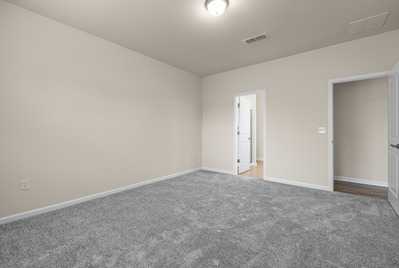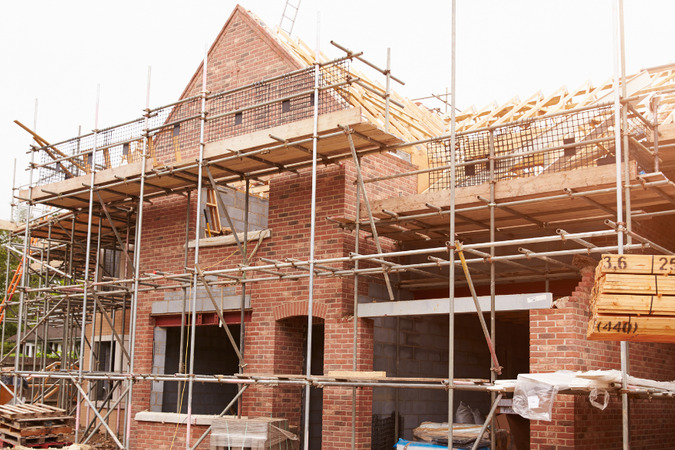Are landlords responsible for damp and mould?

With the weather beginning to turn, damp and mould can start to crawl into homes. If you’re a landlord, now is the time to check for any damp and mould issues, and sort them out before they get unmanageable and unsafe.
In this blog we run through the different types of damp, what the landlord's responsibilities for damn and mould are, and how to deal with them.
What types of damp are there?
There are different types of damp that can occur in the home:
Rising damp
This is caused by water rising from the ground into the home, usually through a broken Damp Proof Course (DPC) or the natural brickwork if the property was built without a DPC. It will only affect basements and ground floor rooms, and will normally rise no more than 12 to 24 inches above ground level. It usually leaves a 'tide mark' low down on the wall.
Rising damp will be present all year round, but is more noticeable in winter. If left untreated it may cause wall plaster to crumble and paper to lift in the affected areas.
Penetrating damp
This type of damp will only be found on external walls or, in the case of roof leaks, on ceilings. It only appears because of a defect outside the home, such as missing pointing to the brickwork, cracked rendering or missing roof tiles. These defects then allow water to pass from the outside to the inner surfaces.
Penetrating damp is far more noticeable following a period of rainfall and will normally appear as a well-defined 'damp patch' which looks and feels damp to the touch.
Condensation
The most common cause of dampness experienced by tenants and householders. Condensation is caused when air containing water vapour is cooled by contact with a cold surface. These damp areas then attract black mould that grows on the surface. Condensation mainly occurs in the colder months whether it is rainy or dry outside. It is usually found in the corners of rooms and near or on the window.
Are landlords responsible for damp and mould?
How responsible the landlord is for damp and mould problems depends on the type of damp and causes of the mould. According to the Landlord and Tenant Act 1985, the landlord is responsible for damp and mould caused by any structural issues, such as penetrating and rising damp. Any issues caused by interior condensation should generally be handled by the tenant.
However, it is still a landlord’s responsibility to make sure your property is fit for a tenant to live in. Damp and mould growth can cause health issues such as respiratory and skin problems, so it’s important that any reports of mould are treated seriously.
Does Awaab’s Law apply to all landlords?
Effective from 27 October 2025, Awaab’s Law sets strict legal deadlines for social landlords in England to address damp and mould hazards. Named after Awaab Ishak, a toddler who tragically died due to prolonged mould exposure, the law mandates that emergency hazards such as severe mould must be investigated and made safe within 24 hours, with alternative accommodation offered if necessary.
Significant hazards must be inspected within 10 working days, with repairs completed within 5 working days post-inspection. Tenants must receive written findings within 3 working days in both cases, and special consideration is required for vulnerable tenants.
While the law currently applies only to social housing providers, private landlords are encouraged to adopt Awaab’s Law principles, including prompt responses and preventive maintenance to safeguard tenant health, reduce long-term costs, and prepare for future legal changes.
What should you do if a tenant raises concerns about mould?
If a tenant reports concerns about mould, as a landlord you need to respond within 14 days. If you don’t respond in this time frame, the tenant could contact the local authority who can force the issue through. When the tenant raises an issue, organise an inspection to determine what’s causing the mould and what repairs, if any, are needed.
For more detailed guidance about what you should do to protect your home against potential risks and health hazards, from mould and other things, check out the government’s housing health and safety rating system guidance.
How can you prevent mould caused by condensation?
It’s impossible to remove all the moisture in the air from a home. The best thing to encourage tenants to do is make small lifestyle changes to keep the moisture levels as low as possible. These things include:
- Dry clothes outside where possible, and in a well-ventilated bathroom with the door closed if not
- Open windows or crack them open slightly when possible to help ventilation
- Don’t leave kettles boiling, cover pans and turn on extractor fans when cooking
- Close the kitchen and bathroom doors when in use
- Leave a gap between furniture and external walls
- Turn on the heating regularly to keep the house a consistent temperature
How do you get rid of mould from your home?
When dealing with black mould, it’s important to remove it carefully or else risk the spores releasing into the air. Some things you can do to help kill and remove the mould:
- Rub rather than brush it away with a damp cloth, and make sure to throw the cloth away after.
- Wipe down affected areas using a fungicidal wash or diluted bleach – remember to always use rubber gloves and wear safety glasses.
- Tea Tree oil is a natural antiseptic and disinfectant but it is also great for cleaning especially on mould or mildew. Try a dilute of three to four drops of Tea Tree oil in two litres of water (hot or cold). Soak mildewed items in the solution or spray on to trouble spots using a plant mister. Wipe, then rinse off. Always ensure you carry out a test on a small area of the fabric/material/surface beforehand.
- After treatment redecorate using a fungicidal paint or wallpaper paste - do not paint over using an ordinary paint.
If you'd like to know more about how our letting agents can help you stay compliant in a shifting rental landscape please contact our team today.






